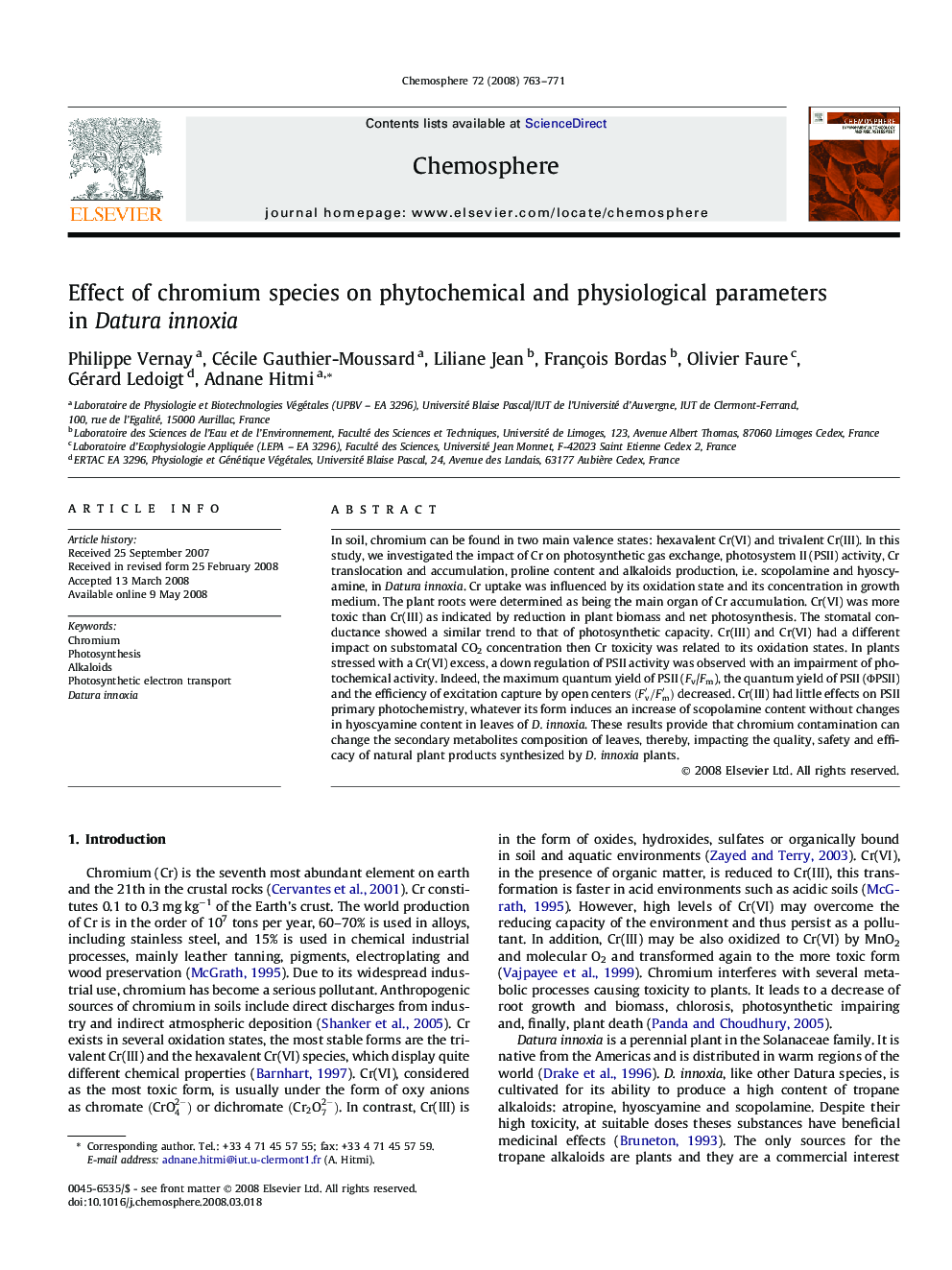| Article ID | Journal | Published Year | Pages | File Type |
|---|---|---|---|---|
| 4414124 | Chemosphere | 2008 | 9 Pages |
In soil, chromium can be found in two main valence states: hexavalent Cr(VI) and trivalent Cr(III). In this study, we investigated the impact of Cr on photosynthetic gas exchange, photosystem II (PSII) activity, Cr translocation and accumulation, proline content and alkaloids production, i.e. scopolamine and hyoscyamine, in Datura innoxia. Cr uptake was influenced by its oxidation state and its concentration in growth medium. The plant roots were determined as being the main organ of Cr accumulation. Cr(VI) was more toxic than Cr(III) as indicated by reduction in plant biomass and net photosynthesis. The stomatal conductance showed a similar trend to that of photosynthetic capacity. Cr(III) and Cr(VI) had a different impact on substomatal CO2 concentration then Cr toxicity was related to its oxidation states. In plants stressed with a Cr(VI) excess, a down regulation of PSII activity was observed with an impairment of photochemical activity. Indeed, the maximum quantum yield of PSII (Fv/Fm), the quantum yield of PSII (ΦPSII) and the efficiency of excitation capture by open centers (Fv′/Fm′) decreased. Cr(III) had little effects on PSII primary photochemistry, whatever its form induces an increase of scopolamine content without changes in hyoscyamine content in leaves of D. innoxia. These results provide that chromium contamination can change the secondary metabolites composition of leaves, thereby, impacting the quality, safety and efficacy of natural plant products synthesized by D. innoxia plants.
